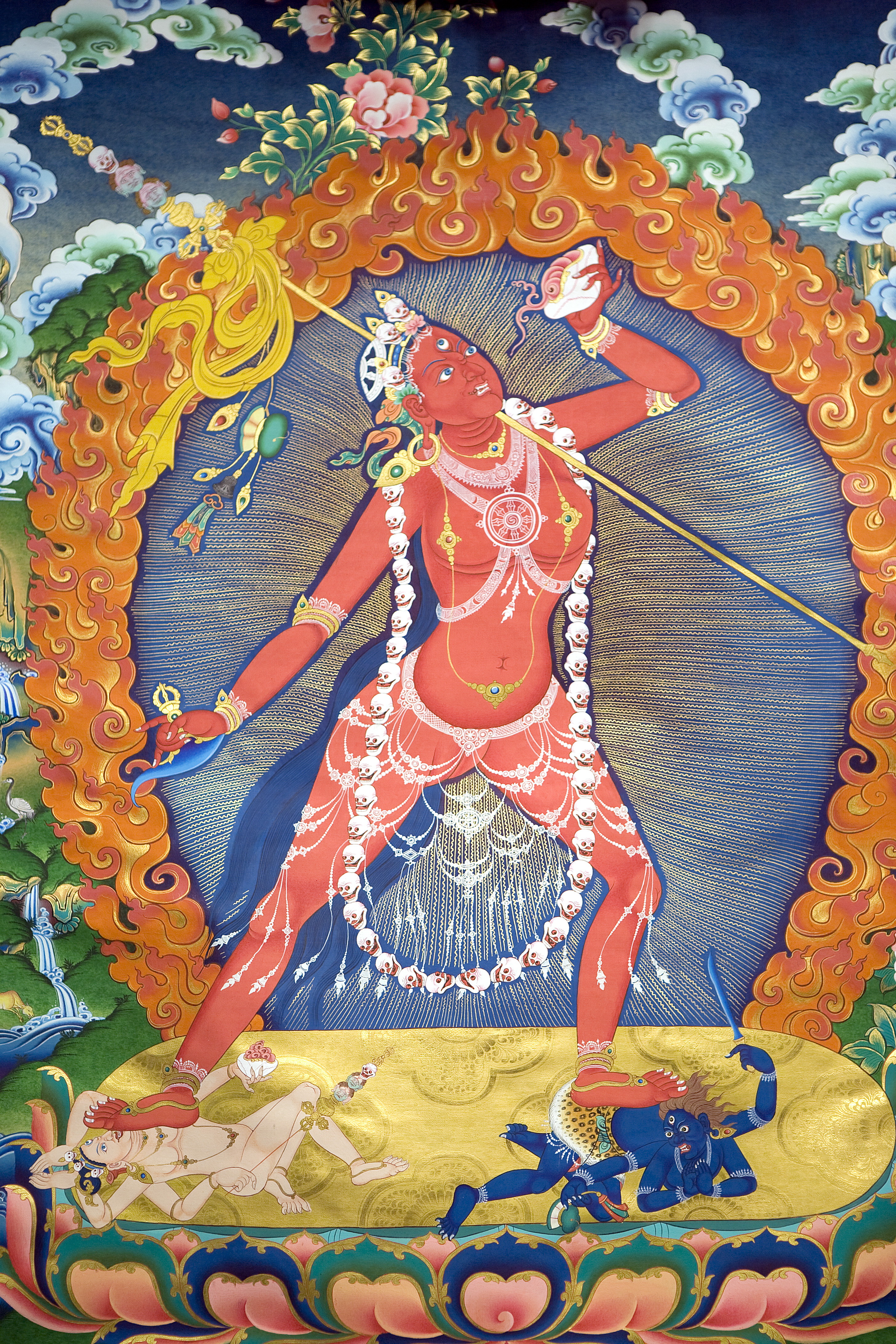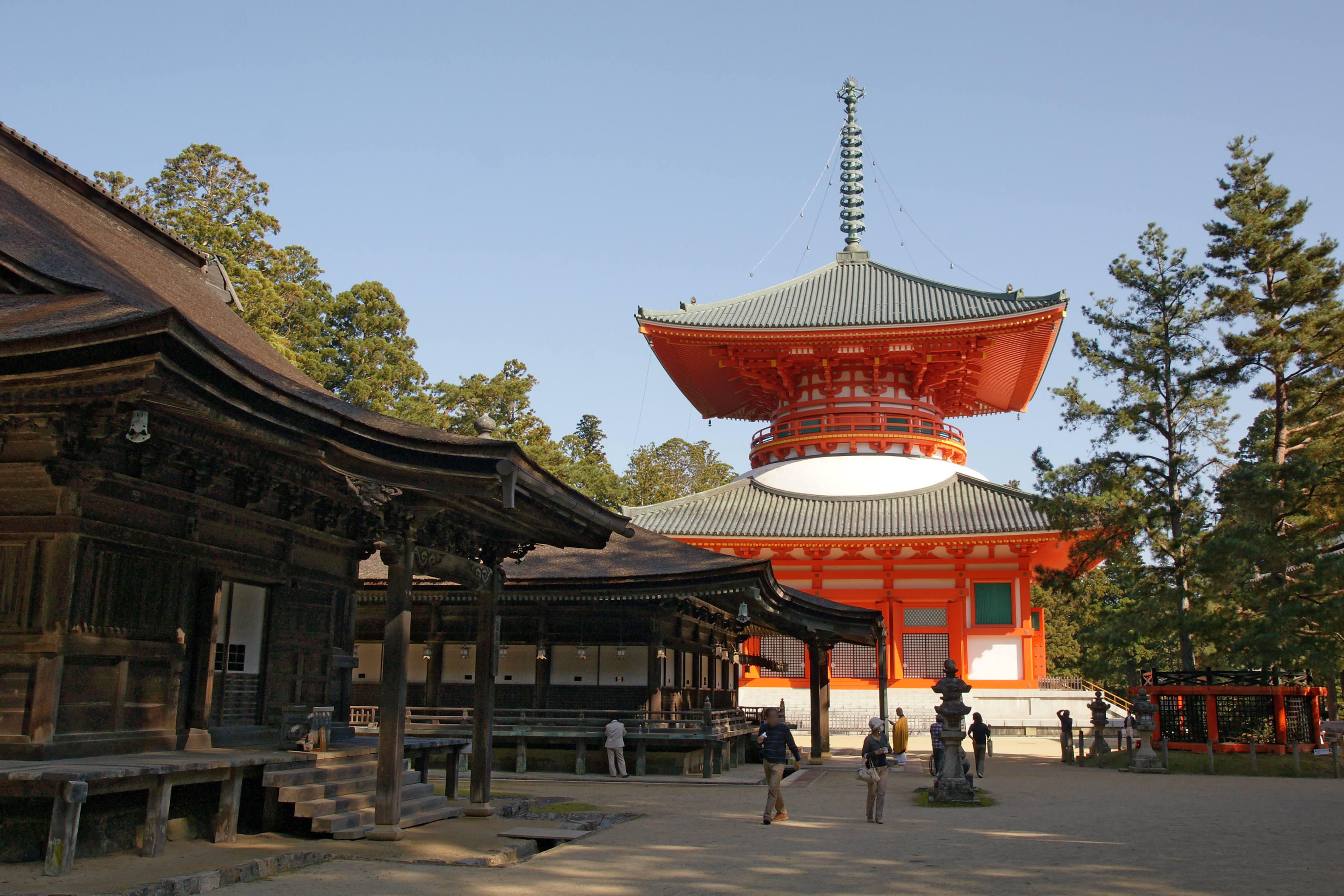|
Tantrism
Tantra (; sa, तन्त्र, lit=loom, weave, warp) are the esoteric traditions of Hinduism and Buddhism that developed on the Indian subcontinent from the middle of the 1st millennium CE onwards. The term ''tantra'', in the Indian traditions, also means any systematic broadly applicable "text, theory, system, method, instrument, technique or practice". A key feature of these traditions is the use of mantras, and thus they are commonly referred to as Mantramārga ("Path of Mantra") in Hinduism or Mantrayāna ("Mantra Vehicle") and Guhyamantra ("Secret Mantra") in Buddhism. Starting in the early centuries of the common era, newly revealed Tantras centering on Vishnu, Shiva or Shakti emerged. There are tantric lineages in all main forms of modern Hinduism, such as the Shaiva Siddhanta tradition, the Shakta sect of Sri-Vidya, the Kaula, and Kashmir Shaivism. In Buddhism, the Vajrayana traditions are known for tantric ideas and practices, which are based on Indian Bu ... [...More Info...] [...Related Items...] OR: [Wikipedia] [Google] [Baidu] |
Chakra
Chakras (, ; sa , text=चक्र , translit=cakra , translit-std=IAST , lit=wheel, circle; pi, cakka) are various focal points used in a variety of ancient meditation practices, collectively denominated as Tantra, or the esoteric or inner traditions of Hinduism.Chakra: Religion Encyclopaedia Britannica The concept of the chakra arose in the early traditions of . Beliefs differ between the Indian religions, with many Buddhist texts consistently mentioning five chakras, while Hindu sources reference six or seven. Early ... [...More Info...] [...Related Items...] OR: [Wikipedia] [Google] [Baidu] |
Mantra
A mantra ( Pali: ''manta'') or mantram (मन्त्रम्) is a sacred utterance, a numinous sound, a syllable, word or phonemes, or group of words in Sanskrit, Pali and other languages believed by practitioners to have religious, magical or spiritual powers. Feuerstein, Georg (2003), ''The Deeper Dimension of Yoga''. Shambala Publications, Boston, MA Some mantras have a syntactic structure and literal meaning, while others do not. The earliest mantras were composed in Vedic Sanskrit in India. At its simplest, the word ॐ (Aum, Om) serves as a mantra, it is believed to be the first sound which was originated on earth. Aum sound when produced creates a reverberation in the body which helps the body and mind to be calm. In more sophisticated forms, mantras are melodic phrases with spiritual interpretations such as a human longing for truth, reality, light, immortality, peace, love, knowledge, and action. Some mantras without literal meaning are musically uplifting ... [...More Info...] [...Related Items...] OR: [Wikipedia] [Google] [Baidu] |
Vajrayana
Vajrayāna ( sa, वज्रयान, "thunderbolt vehicle", "diamond vehicle", or "indestructible vehicle"), along with Mantrayāna, Guhyamantrayāna, Tantrayāna, Secret Mantra, Tantric Buddhism, and Esoteric Buddhism, are names referring to Buddhist traditions associated with Tantra and "Secret Mantra", which developed in the medieval Indian subcontinent and spread to Tibet, Nepal, other Himalayan states, East Asia, and Mongolia. Vajrayāna practices are connected to specific lineages in Buddhism, through the teachings of lineage holders. Others might generally refer to texts as the Buddhist Tantras. It includes practices that make use of mantras, dharanis, mudras, mandalas and the visualization of deities and Buddhas. Traditional Vajrayāna sources say that the tantras and the lineage of Vajrayāna were taught by Śākyamuni Buddha and other figures such as the bodhisattva Vajrapani and Padmasambhava. Contemporary historians of Buddhist studies meanwhile argue t ... [...More Info...] [...Related Items...] OR: [Wikipedia] [Google] [Baidu] |
Vajrayogini
Vajrayoginī ( sa, italic=yes, Vajrayoginī वज्रयोगिनी; , Dorjé Neljorma; mn, Огторгуйд Одогч, Нархажид, ) is a Tantric Buddhist female Buddha and a . The ''Vajrayogini'' cult dates back to the tenth and twelfth centuries. Vajrayoginī's essence is "great passion" (''maharaga''), a transcendent passion that is free of selfishness and illusion—she intensely works for the well-being of others and for the destruction of ego clinging. She is seen as being ideally suited for people with strong passions, providing the way to transform those passions into enlightened virtues. She is an Anuttarayoga Tantra iṣṭadevatā (meditation deity) and her practice includes methods for preventing ordinary death, intermediate state ( bardo) and rebirth ( samsara) by transforming them into paths to enlightenment, and for transforming all mundane daily experiences into higher spiritual paths. Practices associated with her are Chöd and the Six Yogas ... [...More Info...] [...Related Items...] OR: [Wikipedia] [Google] [Baidu] |
Kaula (Hinduism)
In the Hindu religious traditions of Shaktism and Shaivism, Kaula, also known as Kula, ("the Kula path") and ("the Kaula tradition"), is a Tantric tradition which is characterised by distinctive rituals and symbolism connected with the worship of Shakti and Shiva. It flourished in ancient India primarily in the 1st millennium CE. Kaula preserves some of the distinctive features of the ''Kāpālika'' tradition, from which it is derived. It is subdivided into four subcategories of texts based on the goddesses Kuleśvarī, Kubjikā, Kālī, and Tripurasundarī respectively. The Trika texts are closely related to the Kuleśvarī texts and can be considered as part of the Kulamārga. In later Hatha Yoga, the Kaula visualization of kundalini rising through a system of chakras is overlaid onto the earlier bindu-oriented system. ''Kaula'' and ''kula'' The translation of the term ''kula'' in English is considered difficult and has raised some problems for researchers. The bas ... [...More Info...] [...Related Items...] OR: [Wikipedia] [Google] [Baidu] |
Daoism
Taoism (, ) or Daoism () refers to either a school of philosophical thought (道家; ''daojia'') or to a religion (道教; ''daojiao''), both of which share ideas and concepts of Chinese origin and emphasize living in harmony with the '' Tao'' (, 'Thoroughfare'); the ''Tao'' is generally defined as the source of everything and the ultimate principle underlying reality. The ''Tao Te Ching'', a book containing teachings attributed to Laozi (), together with the later writings of Zhuangzi, are both widely considered the keystone works of Taoism. Taoism teaches about the various disciplines for achieving perfection through self-cultivation. This can be done through the use of Taoist techniques and by becoming one with the unplanned rhythms of the all, called "the way" or "Tao". Taoist ethics vary depending on the particular school, but in general tend to emphasize ''wu wei'' (action without intention), naturalness, simplicity, spontaneity and the Three Treasures: , compassion, ... [...More Info...] [...Related Items...] OR: [Wikipedia] [Google] [Baidu] |
Bön
''Bon'', also spelled Bön () and also known as Yungdrung Bon (, "eternal Bon"), is a Tibetan religious tradition with many similarities to Tibetan Buddhism and also many unique features.Samuel 2012, pp. 220-221. Bon initially developed in the tenth and eleventh centuries, but may retain elements from earlier religious traditions (which also used the term Bon).Kvaerne 1996, pp. 9-10. Bon remains a significant minority religion in Tibet (especially in Eastern Tibet) and in the surrounding Himalayan regions. The relationship between Bon and Tibetan Buddhism has been a subject of debate. According to the modern scholar Geoffrey Samuel, while Bon is "essentially a variant of Tibetan Buddhism" with many resemblances to Nyingma, it also preserves some genuinely ancient pre-Buddhist elements. David Snellgrove likewise sees Bon as a form of Buddhism, albeit a heterodox kind. Similarly, John Powers writes that "historical evidence indicates that Bön only developed as a self-consci ... [...More Info...] [...Related Items...] OR: [Wikipedia] [Google] [Baidu] |
Jainism
Jainism ( ), also known as Jain Dharma, is an Indian religion. Jainism traces its spiritual ideas and history through the succession of twenty-four tirthankaras (supreme preachers of ''Dharma''), with the first in the current time cycle being Rishabhadeva, whom the tradition holds to have lived millions of years ago, the twenty-third ''tirthankara'' Parshvanatha, whom historians date to the 9th century BCE, and the twenty-fourth ''tirthankara'' Mahavira, around 600 BCE. Jainism is considered to be an eternal ''dharma'' with the ''tirthankaras'' guiding every time cycle of the cosmology. The three main pillars of Jainism are ''ahiṃsā'' (non-violence), ''anekāntavāda'' (non-absolutism), and ''aparigraha'' (asceticism). Jain monks, after positioning themselves in the sublime state of soul consciousness, take five main vows: ''ahiṃsā'' (non-violence), ''satya'' (truth), ''asteya'' (not stealing), ''brahmacharya'' (chastity), and ''aparigraha'' (non-possessiveness). These pr ... [...More Info...] [...Related Items...] OR: [Wikipedia] [Google] [Baidu] |
Eastern Religions
The Eastern religions are the religions which originated in East, South and Southeast Asia and thus have dissimilarities with Western, African and Iranian religions. This includes the East Asian religions such as Confucianism, Taoism, Chinese folk religion, Shinto, and Korean Shamanism; South Asian religions such as Hinduism, Buddhism, Sikhism, and Jainism; and Southeast Asian religions such as Vietnamese folk religion as well as animistic indigenous religions. This East-West religious distinction, just as with the East-West culture distinction, and the implications that arise from it, is broad and not precise. Furthermore, the geographical distinction has less meaning in the current context of global transculturation. While many Western observers attempt to distinguish between Eastern philosophies and religions, this is a distinction that does not exist in some Eastern traditions. Indic religions Also known as Dharmic religions, these are the religious sects originat ... [...More Info...] [...Related Items...] OR: [Wikipedia] [Google] [Baidu] |
Southern Esoteric Buddhism
Southern Esoteric Buddhism and Borān kammaṭṭhāna ('former practices') are terms used to refer to certain esoteric practices, views and texts within Theravada Buddhism. It is sometimes referred to as Tantric Theravada due to its parallel with tantric traditions (although it makes no reference to tantras); or as Traditional Theravada Meditation. L.S. Cousins defines it as "a type of Southern Buddhism which links magical and, ritual practices to a theoretical systematisation of the Buddhist path itself".Cousins, L.S. (1997),Aspects of Southern Esoteric Buddhism", in Peter Connolly and Sue Hamilton (eds.), Indian Insights: Buddhism, Brahmanism and Bhakd Papers from the Annual Spalding Symposium on Indian Religions, Luzac Oriental, London: 185-207, 410. One specific kind of Southern Esoteric Buddhism is termed the Yogāvacara tradition. It is most widely practiced today in Cambodia and Laos and in the pre-modern era was a major Buddhist current in Southeast Asia. In the west, ... [...More Info...] [...Related Items...] OR: [Wikipedia] [Google] [Baidu] |
Newar Buddhism
Newar Buddhism is the form of Vajrayana Buddhism practiced by the Newar people of the Kathmandu Valley, Nepal. It has developed unique socio-religious elements, which include a non-monastic Buddhist society based on the Newar caste system and patrilineality. The ritual priestly (''guruju'') caste, vajracharya (who perform rituals for others) and ''shakya'' (who perform rituals mostly within their own families) form the non-celibate religious clergy caste while other Buddhist Newar castes like the Urāy act as patrons. Uray also patronise Tibetan Vajrayana, Theravadin, and even Japanese clerics. It is the oldest known sect of the Vajrayana tradition outdating the Tibetan school of Vajrayana by more than 600 years. Although there was a vibrant regional tradition of Buddhism in the Kathmandu Valley during the first millennium, the transformation into a distinctive cultural and linguistic form of Buddhism appears to have taken place in the fifteenth century, at about the same ... [...More Info...] [...Related Items...] OR: [Wikipedia] [Google] [Baidu] |
Shingon Buddhism
Shingon monks at Mount Koya is one of the major schools of Buddhism in Japan and one of the few surviving Vajrayana lineages in East Asia, originally spread from India to China through traveling monks such as Vajrabodhi and Amoghavajra. Known in Chinese as the Tangmi (; the Esoteric School in Tang Dynasty of China), these esoteric teachings would later flourish in Japan under the auspices of a Buddhist monk named Kūkai (), who traveled to Tang China to acquire and request transmission of the esoteric teachings. For that reason, it is often called Japanese Esoteric Buddhism, or Orthodox Esoteric Buddhism. The word ''shingon'' is the Japanese reading of the Chinese word ('), which is the translation of the Sanskrit word (" mantra"). History Shingon Buddhist doctrine and teachings arose during the Heian period (794-1185) after a Buddhist monk named Kūkai traveled to China in 804 to study Esoteric Buddhist practices in the city of Xi'an (), then called Chang-a ... [...More Info...] [...Related Items...] OR: [Wikipedia] [Google] [Baidu] |

.jpg)
_(8697431158).jpg)




.jpg)

